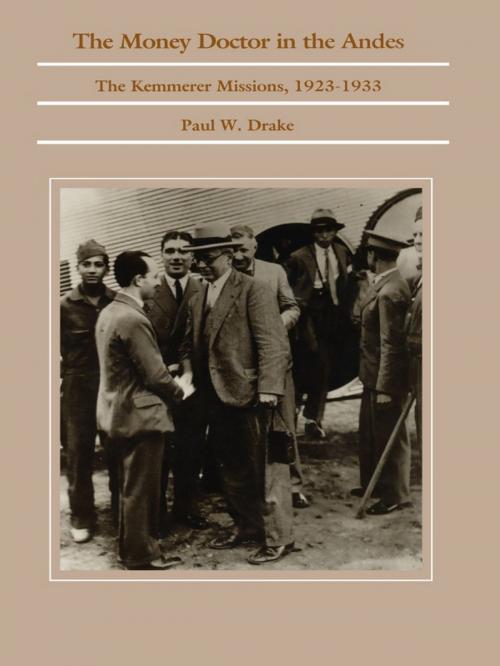The Money Doctor in the Andes
U.S. Advisors, Investors, and Economic Reform in Latin America from World War I to the Great Depression
Nonfiction, History, Americas, South America, Business & Finance, Economics, Economic History| Author: | Paul W. Drake | ISBN: | 9780822377832 |
| Publisher: | Duke University Press | Publication: | January 18, 1989 |
| Imprint: | Duke University Press Books | Language: | English |
| Author: | Paul W. Drake |
| ISBN: | 9780822377832 |
| Publisher: | Duke University Press |
| Publication: | January 18, 1989 |
| Imprint: | Duke University Press Books |
| Language: | English |
The Money Doctor in the Andes is an account of the technical assistance missions to five Andean republics—Colombia, Ecuador, Chile, Bolivia, and Peru—undertaken by Princeton University economist Edwin Walter Kemmerer during the 1920s. Drake demonstrates that in each case the Kemmerer mission recommended an identical series of monetary, fiscal, and banking reforms, adding occasional recommendations on everything from administrative reorganization to penal code reform as local circumstances seemed to warrant. In each case, too, local legislatures adopted all the main Kemmerer proposals virtually without debate or modifications.
Drake links the Kemmerer missions to vital developments in the political economic history of the Andean republics in the interwar period. He analyzes the domestic interest groups and political forces whose convergent strategies gave the Kemmerer missions their remarkable record in achieving local success for the reforms proposed. Second, Drake situates the Kemmerer missions at the center of a process of political modernization that created new institutions and policy agencies in each of the five countries; the missions thereby contributed to the expansion of the central government as an agent of development in ways that later differed sharply from Kemmerer's orthodox policies. Finally, The Money Doctor in the Andes regards developments in the Andean countries in the context of the region's developing economic ties to the United States. Expectations that Kemmerer's plans would simultaneously attract foreign capital and control inflation drew support from sectors as diverse as trade unions and landowners. When the Depression deepened, Kemmerer's policies proved counterproductive and the fragile consensus that had installed them fell apart, but the political and administrative reforms endured—with far-reaching consequences.
The Money Doctor in the Andes is an account of the technical assistance missions to five Andean republics—Colombia, Ecuador, Chile, Bolivia, and Peru—undertaken by Princeton University economist Edwin Walter Kemmerer during the 1920s. Drake demonstrates that in each case the Kemmerer mission recommended an identical series of monetary, fiscal, and banking reforms, adding occasional recommendations on everything from administrative reorganization to penal code reform as local circumstances seemed to warrant. In each case, too, local legislatures adopted all the main Kemmerer proposals virtually without debate or modifications.
Drake links the Kemmerer missions to vital developments in the political economic history of the Andean republics in the interwar period. He analyzes the domestic interest groups and political forces whose convergent strategies gave the Kemmerer missions their remarkable record in achieving local success for the reforms proposed. Second, Drake situates the Kemmerer missions at the center of a process of political modernization that created new institutions and policy agencies in each of the five countries; the missions thereby contributed to the expansion of the central government as an agent of development in ways that later differed sharply from Kemmerer's orthodox policies. Finally, The Money Doctor in the Andes regards developments in the Andean countries in the context of the region's developing economic ties to the United States. Expectations that Kemmerer's plans would simultaneously attract foreign capital and control inflation drew support from sectors as diverse as trade unions and landowners. When the Depression deepened, Kemmerer's policies proved counterproductive and the fragile consensus that had installed them fell apart, but the political and administrative reforms endured—with far-reaching consequences.















